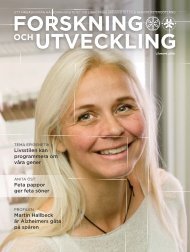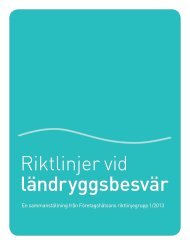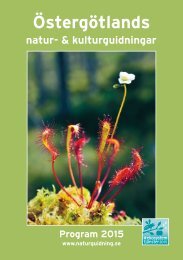PREMUS2016
25Pj5tb
25Pj5tb
You also want an ePaper? Increase the reach of your titles
YUMPU automatically turns print PDFs into web optimized ePapers that Google loves.
PREMUS 2016<br />
Program<br />
Keynote speakers<br />
page 20<br />
Wednesday June 22, 8:30-10:00am, Ballroom B<br />
Dr. Jack Callaghan<br />
Sitting to death—or at least until we’re injured<br />
The health risks linked with prolonged sitting continue to<br />
be a hot topic in the media. But what do we know about<br />
prolonged sitting as an injury risk to the low back? As we<br />
demonize sitting in favour of standing, and as sit-stand<br />
stations become more common in workplaces, what do<br />
we know about the risk of low-back injury associated with<br />
prolonged standing? Is there an optimal amount of time<br />
workers should be sitting and standing to reduce their risk<br />
of low-back injury and improve their health?<br />
According to Dr. Jack Callaghan, a long-time researcher on<br />
the link between sitting and low-back pain, the answers to<br />
these questions lie in understanding the mechanisms of<br />
injury associated with low-back pain—how tissues in the<br />
back become injured and generate pain, and how the spine<br />
experiences loads in different activities.<br />
Callaghan will talk about his research program that seeks<br />
to understand how exposure to a variety of factors initiates<br />
and exacerbates low-back injury. He will share what he has<br />
learned about how to assess daily loading on the back and<br />
how to set workplace exposure limits to prevent low-back<br />
injuries, including limits for sitting and standing on the<br />
job—and the optimal mix between the two.<br />
Dr. Jack Callaghan, who holds a Canada Research Chair in<br />
Spine Biomechanics and Injury Prevention, is a Professor in<br />
the Department of Kinesiology, Faculty of Applied Health<br />
Sciences at the University of Waterloo in Waterloo, Ont.,<br />
Canada. He’s also the Director of Research for the Centre<br />
of Research Expertise for the Prevention of Musculoskeletal<br />
Disorders (CRE-MSD). His research program into the mechanisms<br />
of injury associated with low-back pain combines a<br />
fundamental in-vitro research approach (i.e. examining the<br />
response of the lumbar spine tissues) with human research<br />
(i.e. examining how exposure to a variety of factors initiate<br />
and exacerbate low-back injuries). It also involves the development<br />
of methods to assess daily loading on the back and<br />
to set workplace exposure limits as preventive measures.





